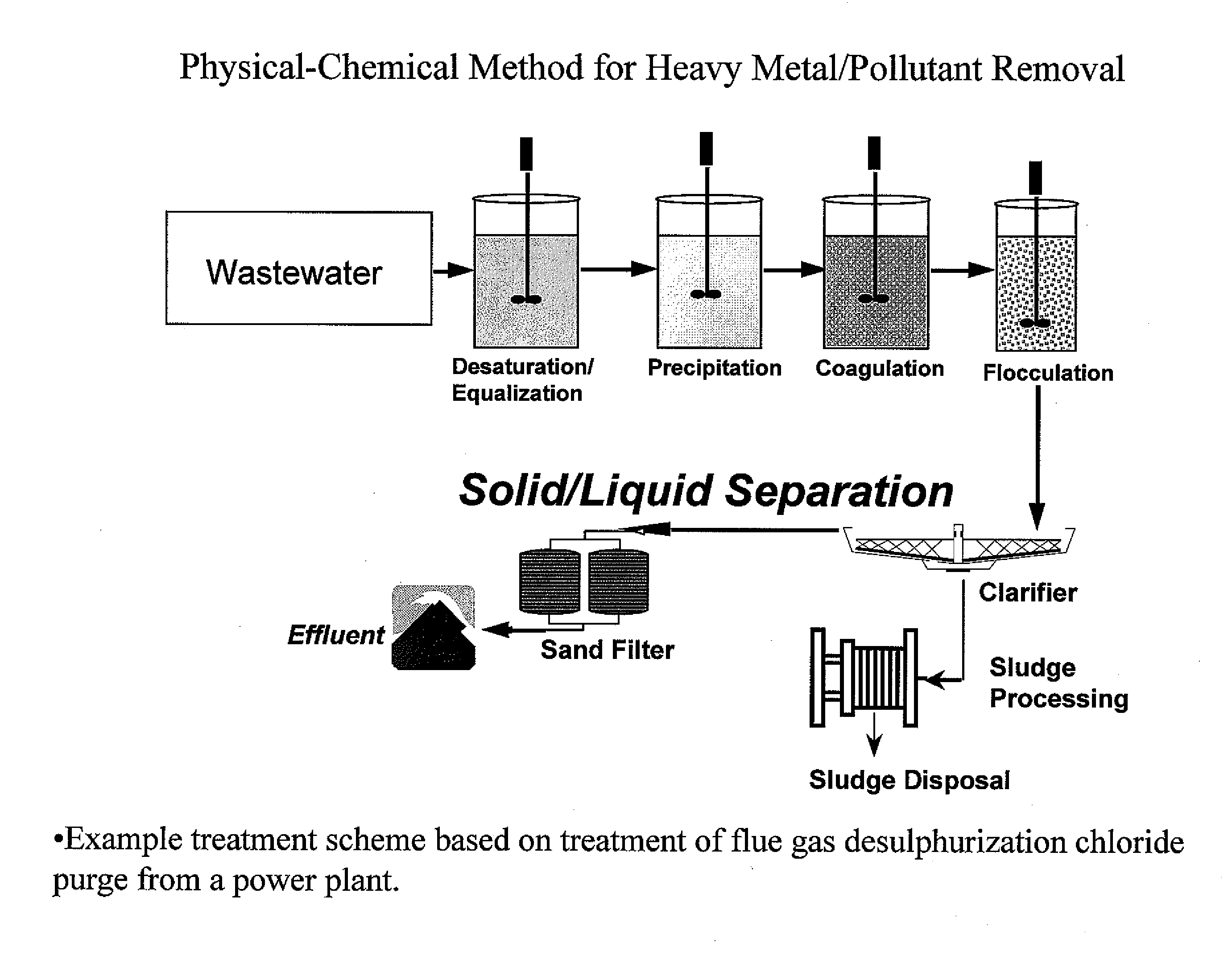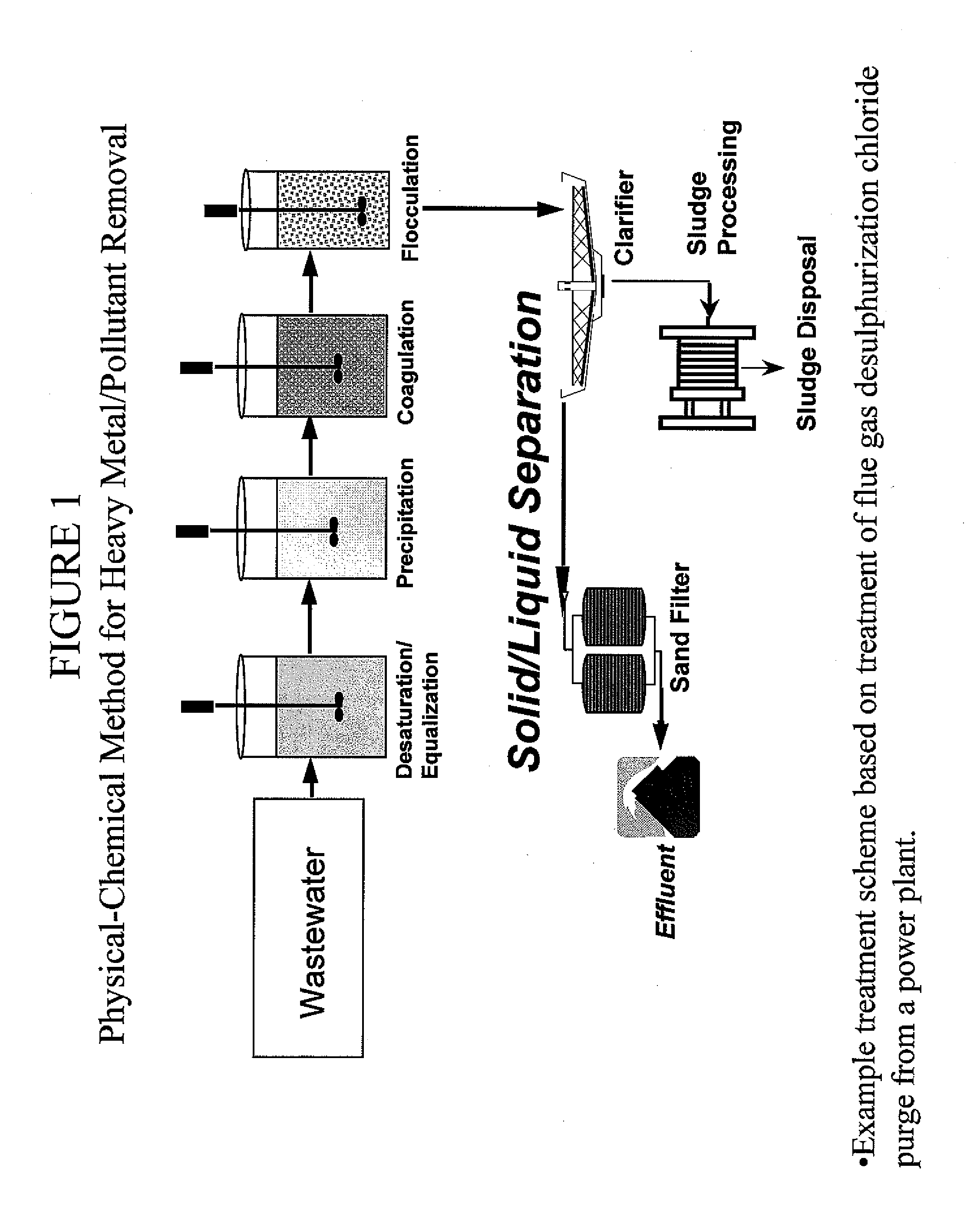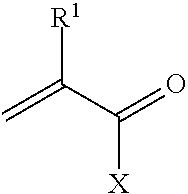Metal scavenging polymers and uses thereof
- Summary
- Abstract
- Description
- Claims
- Application Information
AI Technical Summary
Benefits of technology
Problems solved by technology
Method used
Image
Examples
example 1
Methyl Acrylate / Tetraethylenepentamine Polymer Backbone which is then Functionalized with a Dithiocarbamate Group
a. Methyl Acrylate / Tetraethylenepentamine Polymer Backbone Synthesis
Tetraethylenepentamine (TEPA) (18.275 weight %) was charged into a glass reactor fitted with a mechanical stirrer and a condenser. While purging the headspace with nitrogen and stirring, methyl acrylate (16.636 weight %) was added dropwise over 30 min where the temperature was maintained between 25-31° C. during the addition and for 1 h after the addition was finished. Next, a second charge of TEPA (18.275 weight %) was performed and the resulting reaction mixture was heated to 130° C. This temperature was held for ˜3 h while collecting the condensate in a Dean-Stark trap. At this time, the polymer melt was allowed to cool to 120° C. and then slowly diluted with deionized (DI) water (46.814 weight %) keeping the temperature above 90° C. during the dilution. The resulting ˜50 weight % polymer solution was ...
example 2
Acrylic Acid / Tetraethylenepentamine Polymer Backbone which is then Functionalized with a Dithiocarbamate Group
a. Acrylic Acid / Tetraethylenepentamine Polymer Backbone Synthesis
Tetraethylenepentamine (TEPA) (37.556 weight %) and sulfuric acid (0.199 weight %) was charged into a glass reactor fitted with a mechanical stirrer and a condenser. While purging the headspace with nitrogen and stirring, acrylic acid (14.304 weight %) was added dropwise over 30 min where the temperature was maintained between 130-140° C. during the addition, allowing the exotherm from the acid base reaction to reach the desired temperature. Next the resulting reaction mixture was heated to 160° C. This temperature was held for 4.5 h while collecting the condensate in a Dean-Stark trap. At this time, the polymer melt was allowed to cool to 120° C. and then slowly diluted with DI water (47.941 weight %) keeping the temperature above 90° C. during the dilution. The resulting ˜50 weight % polymer solution was then...
example 3
a. Acrylamide / Tetraethylenepentamine Polymer Backbone Synthesis
Tetraethylenepentamine (TEPA) (14.581 weight %) was charged into a glass reactor fitted with a mechanical stirrer and a condenser. While purging the headspace with nitrogen and stirring, a 48.6% acrylamide solution (30.441 weight %) was added dropwise over 1 h during which the desired temperature was reached and was maintained between 65-75° C. After the acrylamide charge, the temperature was maintained for an additional 1 h. Next, a second charge of TEPA (14.581 weight %) was performed and the resulting reaction mixture was heated to 160° C. while collecting the distilled water via a Dean-Stark trap. This temperature was held for ˜4 h while continuing to collect the condensate in a Dean-Stark trap and trapping the released ammonia side product. At this time, the polymer melt was allowed to cool to 120° C. and then slowly diluted with DI water (40.397 weight %) keeping the temperature above 90° C. during the dilution. Th...
PUM
| Property | Measurement | Unit |
|---|---|---|
| Temperature | aaaaa | aaaaa |
| Temperature | aaaaa | aaaaa |
| Molecular weight | aaaaa | aaaaa |
Abstract
Description
Claims
Application Information
 Login to View More
Login to View More - R&D
- Intellectual Property
- Life Sciences
- Materials
- Tech Scout
- Unparalleled Data Quality
- Higher Quality Content
- 60% Fewer Hallucinations
Browse by: Latest US Patents, China's latest patents, Technical Efficacy Thesaurus, Application Domain, Technology Topic, Popular Technical Reports.
© 2025 PatSnap. All rights reserved.Legal|Privacy policy|Modern Slavery Act Transparency Statement|Sitemap|About US| Contact US: help@patsnap.com



